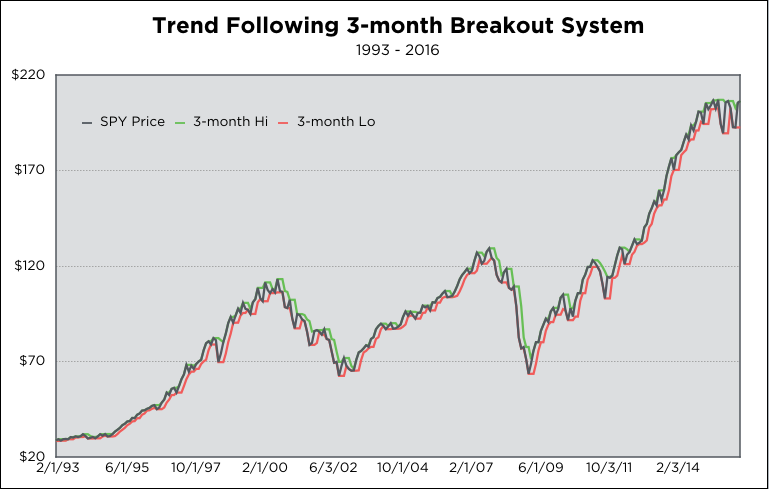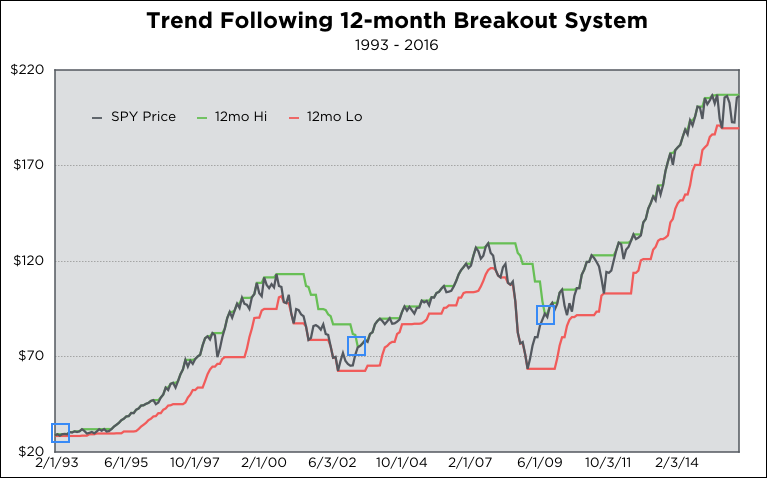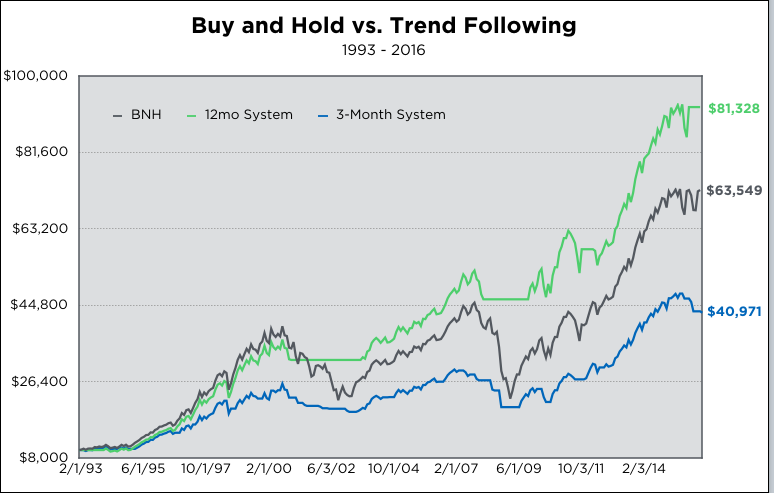The Biggest Problem in Short-Term Investing

We can approach the markets many different ways. In this article, I’d like to illuminate the trouble with holding onto our investments too tight — that is, not giving them the necessary rope to fluctuate and evolve into a big trend.
With a tight grip (a short-term view), we get in and out more frequently — reacting to every little wiggle. The allure: that we can earn profits on most of our trades; buy in closer to bottoms and sell out closer to tops; also, we feel more productive and do not have to feel boredom.
With a loose grip (a long-term view), we try to ride the large trends that persist over months and years. We do not get greedy trying to pick bottoms or tops, but instead focus on capturing the meat of the move. We give the market room to oscillate up and down as long as it trends in a general direction. We’re OK with doing nothing, going long periods of time without making any trades and enjoy waiting for opportunity.
In this post, we use a counter-intuitive approach to investing — buying high and selling low. Most of you are likely familiar with the classic “buy low, sell hi” methodology. There are many problems with this approach, but we’ll save that for another post.
Buying highs and selling lows accomplishes two things: 1) we do not miss out on big trends; and 2) we protect capital by cutting our losses during bear markets (downtrends).
Short-Term Investing
Short-term investors want to ride lots of small moves. They play the back and forth game of the markets in the attempt to make quick profits and sell out.
In this first example, we use a simple indicator to buy and sell — the 3-month price channel. It calculates the highest high and lowest low for the past three months. We buy when the price breaks above the 3-month high and sell when the price breaks below the 3-month low. For simplicity’s sake, we only take long positions.
In the chart below, notice how tight the green (buy) and red (sell) bands are and how often this system makes trades (21 buy signals in 18 years). One of the risks of having a short-term view (a tight grip) is that you can get whipsawed during persistent up and downtrends.
Executing a short-term system in real time can get frustrating and wear on your ability to follow it, especially during choppy trend periods; also, and this goes for any strategy, when your feelings about the markets conflict with the system’s signals.

In and out. In and out. In and out. The perfect system for those who cannot sit still.
Long-Term Investing
Long-term investors want to ride major trends without getting knocked out of their position by insignificant market noise. In order to accomplish this, we de-sensitize our indicator by expanding it to a 12-month channel.
We buy when the price breaks above the 12-month high (blue box); sell out when the price breaks below the 12-month low. Same deal as before — we only take long positions; no shorts.
This approach trades much less frequently and typically only changes its stance after a significant change in trend. For example, in the 2001–2002 bear market, you would’ve to waited until the market rallied ~35% off the lows before buying in; in 2009, you would’ve watched a 60% rally off March lows before finally buying in.
It can go years without making a trade. Like the short term system, this one can also be difficult to execute — especially during violent changes in trend near tops and bottoms.

Get in the big uptrends. Stay out of the big downtrends.
The Results — Patience and Boredom Pay Of
The system that maintains a long-term view (loose grip), adapts to trends and cuts losses during downtrends makes the most money.
Buy and Hold comes in second place.
Short-term (tight grip) trend-following investing comes in third. It makes money, sure, but it severely underperforms. These results illuminate the problems that come with trying to ride short-term trends.
Can you imagine the results if we scaled down the short-term indicator to 3-weeks or 3-days from 3-months? The market would eat those strategies alive.

Results depend on how often you change your mind.
Bang For Your Buck
Both trend following systems beat the Buy-and-Hold strategy on a risk-adjusted performance basis (as measured by the MAR and Sharpe ratios).
The short-term system suffers almost half the loss Buy-and-Hold does. This is a good thing. But it underperforms on an absolute return basis (CAGR) — which is due to getting whipsawed in choppy trend environments.
The long-term system crushes everyone. Absolute returns vs the others? Crush. Risk-adjusted returns? Crush.
Having a long-term view, adding a simple layer of sophistication (getting out when the trend turns down) makes all the difference. It allows to capture upside while reducing downside risk; protecting your capital at all times and allowing you to buy back in later with a lot of dry powder.
Taking a more advanced approach to wealth building, especially if you’re an investor who also runs an internet business, is to complete this Advanced MoneyMaking Blueprint from Early to Rise University.
You have to be honest with yourself and understand that while short-term thinking may feel good, it doesn’t always produce the best results — especially over the long run. When you do the work, like we’ve done in this post, you cut through the BS that is sold across Wall Street and you save yourself a lot of time, stress and money in the process.
Seems like a no brainer to me.
Originally posted on April 19, 2016
Disclosure
Past performance is not necessarily indicative of future results. Alternative investments, including those offered by Melissinos Trading, are speculative, involve substantial risk, and are not suitable for all investors.
This communication is for information purposes only and should not be regarded as an offer to sell or as a solicitation of an offer to buy any financial product, an official confirmation of any transaction, or as an official statement of Melissinos Trading LLC. All information is subject to change without notice.
The charts show examples of trends. Inclusion of a chart as a trend example does not imply any kind of recommendation to buy, sell, hold or stay out.

